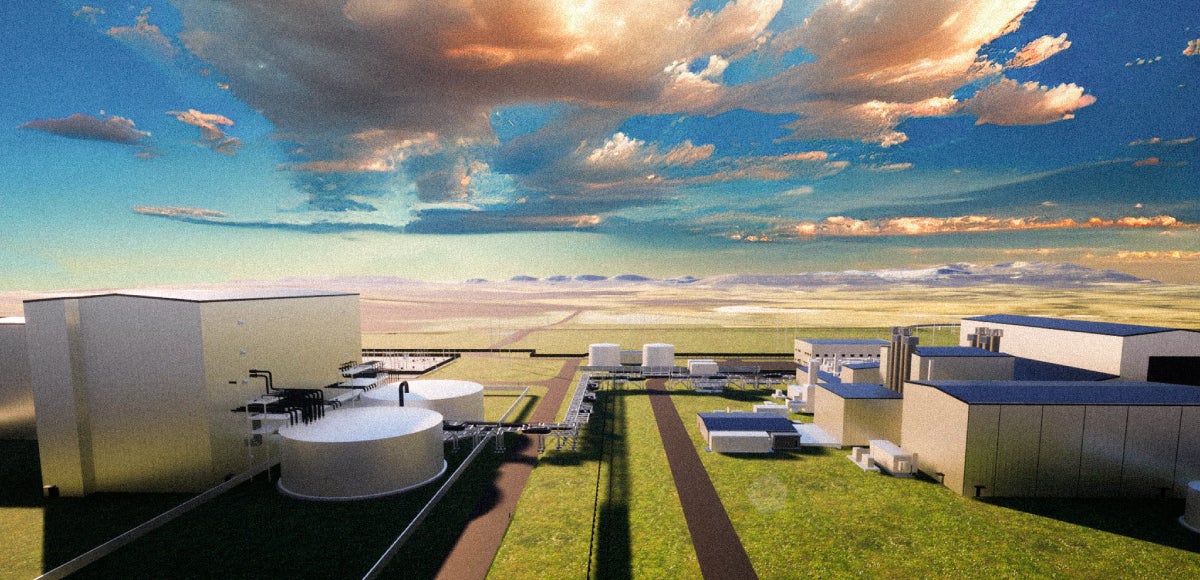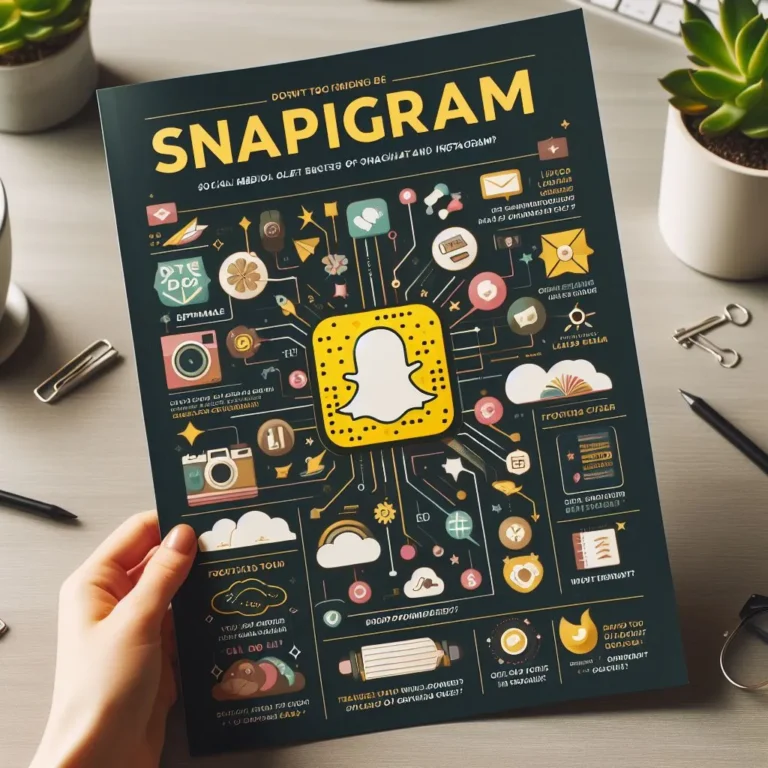In a world driven by innovation and technological advancements, the realm of inventions continues to expand at an unprecedented pace. From groundbreaking discoveries in science and medicine to revolutionary developments in communication and transportation, human ingenuity knows no bounds. However, amidst this flurry of creativity and progress, there still exist uncharted territories waiting to be explored – inventions that haven’t been invented yet. These untapped ideas hold the potential to reshape our future, revolutionize industries, and enhance the quality of life for people around the globe.
As we embark on a journey to uncover these latent inventions, we are faced with a myriad of possibilities and opportunities. The intersection of imagination, technology, and human needs creates a fertile ground for innovation to flourish. By delving into the unexplored horizons of invention, we can unlock new frontiers, push the boundaries of what is possible, and pave the way for a brighter tomorrow. Join us as we delve into the world of inventions awaiting creation and explore the untapped potential of human creativity.
Unveiling the Latent Potential: Innovations Yet to Emerge
1.1 The Future of Transportation
The transportation industry has undergone significant transformations over the years, from the invention of the wheel to the development of high-speed trains and electric vehicles. However, there are still numerous opportunities for innovation in this sector. One area that holds immense potential is the concept of flying cars. While this idea may seem like something out of a science fiction movie, advances in drone technology and autonomous vehicles have brought us closer to making flying cars a reality. Imagine a world where commuters can soar above traffic jams and reach their destinations in a fraction of the time it takes today. This revolutionary mode of transportation could not only alleviate congestion on roads but also open up new possibilities for urban planning and design.
Another area ripe for innovation in transportation is sustainable energy sources. With the looming threat of climate change, there is an urgent need to transition towards greener and more eco-friendly modes of transport. Electric vehicles have gained traction in recent years, but there is still room for improvement in terms of battery technology, charging infrastructure, and overall efficiency. The next wave of transportation inventions could focus on harnessing renewable energy sources such as solar or kinetic energy to power vehicles, reducing carbon emissions and mitigating the impact of fossil fuels on the environment.
1.2 Table: Potential Future Transportation Inventions
| Invention | Description |
|---|---|
| Flying Cars | Vehicles capable of vertical takeoff and landing, combining the convenience of cars with the freedom of flight. |
| Solar-Powered Vehicles | Cars and buses equipped with solar panels to harness energy from the sun and reduce reliance on traditional fuel sources. |
| Hyperloop | High-speed transportation system using magnetic levitation to propel pods through vacuum tubes, enabling travel at near-supersonic speeds. |
1.3 The Role of Artificial Intelligence
Artificial intelligence (AI) has emerged as a transformative force across various industries, from healthcare and finance to entertainment and manufacturing. However, the full potential of AI is yet to be realized, particularly in the realm of personalized medicine. Imagine a world where medical treatments are tailored to individual patients based on their genetic makeup, lifestyle factors, and environmental influences. AI-powered algorithms could analyze vast amounts of data to predict disease outcomes, recommend personalized treatment plans, and optimize healthcare delivery for better patient outcomes. This personalized approach to medicine could revolutionize the way we diagnose, treat, and prevent diseases, leading to more effective and efficient healthcare systems worldwide.
Another area where AI could make a significant impact is in the field of education. With the rise of online learning platforms and digital classrooms, there is a growing need for intelligent tutoring systems that can adapt to students’ learning styles, pace, and preferences. AI algorithms could analyze student performance data, identify areas of improvement, and provide personalized feedback and guidance to help learners achieve their academic goals. By harnessing the power of AI in education, we can create more engaging, interactive, and effective learning experiences for students of all ages and backgrounds.
1.4 List: Potential AI-Driven Inventions in Healthcare and Education
- Personalized Medicine Algorithms: AI-powered tools that analyze genetic data, clinical records, and lifestyle factors to tailor medical treatments to individual patients.
- Intelligent Tutoring Systems: AI algorithms that provide personalized learning experiences, adaptive feedback, and targeted interventions to help students succeed academically.
- Virtual Reality Simulations: Immersive educational experiences that leverage AI and virtual reality technology to enhance learning outcomes and engagement in diverse subject areas.
The Threshold of Ingenuity: Exploring Uncharted Invention Territories
2.1 The Future of Space Exploration
Humanity’s fascination with the cosmos has fueled decades of space exploration, from the first moon landing to the ongoing missions to Mars and beyond. However, there are still vast unexplored regions of space waiting to be discovered. One area of interest is asteroid mining, where spacecraft could extract valuable resources such as rare metals, water, and minerals from asteroids and bring them back to Earth or use them for future space missions. This innovative approach to resource extraction could alleviate pressure on Earth’s finite resources, enable sustainable space exploration, and open up new economic opportunities in the burgeoning space industry.
Another frontier in space exploration is the search for extraterrestrial life. While scientists have yet to find definitive evidence of life beyond Earth, the discovery of microbial life on Mars or moons such as Europa and Enceladus could have profound implications for our understanding of the universe and our place in it. Advanced robotic missions, sample return missions, and telescopic observations could provide valuable insights into the existence of alien life forms and the conditions necessary for life to thrive in other parts of the solar system and beyond.
2.2 List: Potential Future Space Exploration Inventions
- Asteroid Mining Technology: Spacecraft equipped with mining tools and processing facilities to extract resources from asteroids and other celestial bodies.
- Life Detection Instruments: Robotic probes and landers designed to search for signs of microbial life on Mars, Europa, Enceladus, and other potentially habitable worlds.
- Space Elevator: A hypothetical structure connecting Earth to space, enabling cost-effective transportation of goods and passengers to orbiting space stations and beyond.
2.3 The Promise of Quantum Computing
Quantum computing represents a paradigm shift in the field of information technology, offering unprecedented computational power and speed compared to classical computers. While quantum computers are still in the early stages of development, they hold immense potential for solving complex problems in cryptography, drug discovery, weather forecasting, and optimization. One of the key advantages of quantum computing is its ability to perform calculations using quantum bits or qubits, which can exist in multiple states simultaneously and enable parallel processing of vast amounts of data. This quantum parallelism could revolutionize industries such as finance, cybersecurity, and artificial intelligence, leading to breakthroughs in areas that were previously deemed unsolvable with classical computing methods.
Another exciting application of quantum computing is in the field of quantum teleportation, where information can be transmitted instantaneously over long distances using quantum entanglement. While teleporting physical objects or humans remains a distant dream, quantum teleportation of information could revolutionize communication networks, secure data transmission, and enable ultra-fast internet connections with unparalleled levels of security and privacy. By harnessing the power of quantum mechanics, researchers are paving the way for a new era of computing and communication that could redefine the limits of human ingenuity.
2.4 Table: Potential Quantum Computing Inventions
| Invention | Description |
|---|---|
| Quantum Cryptography | Secure communication protocols based on quantum principles, offering protection against cyber threats and data breaches. |
| Quantum Machine Learning | Algorithms and models optimized for quantum computers, enabling faster training, prediction, and decision-making in AI applications. |
| Quantum Weather Forecasting | Simulation models and prediction tools leveraging quantum computing to improve accuracy and reliability of weather forecasts. |
From Concept to Reality: Shaping the Future of Inventions
3.1 The Rise of Biotechnology
Advances in biotechnology have revolutionized healthcare, agriculture, and environmental conservation, offering new solutions to age-old problems and challenges. One area of innovation in biotechnology is gene editing, where scientists can modify the DNA of living organisms to correct genetic defects, enhance desirable traits, or develop new therapies for diseases. Technologies such as CRISPR-Cas9 have opened up new possibilities for precision medicine, gene therapy, and agricultural breeding, paving the way for a future where genetic disorders could be cured, crops could be engineered for higher yields, and endangered species could be saved from extinction.
Another frontier in biotechnology is synthetic biology, where researchers design and construct biological systems and organisms with novel functions not found in nature. By combining engineering principles with biological components, scientists can create biofuels, biomaterials, and pharmaceuticals with enhanced properties and reduced environmental impact. Synthetic biology holds promise for addressing global challenges such as climate change, food security, and infectious diseases, offering sustainable solutions that harness the power of nature for the benefit of society and the planet.
3.2 List: Potential Biotechnology Inventions
- Gene-Edited Organisms: Plants and animals modified using gene editing techniques to improve traits such as disease resistance, nutritional content, and environmental adaptation.
- Bioengineered Pharmaceuticals: Drugs and vaccines produced using synthetic biology methods to enhance efficacy, safety, and affordability for patients worldwide.
- Biodegradable Plastics: Sustainable materials derived from biological sources and designed to decompose naturally, reducing plastic pollution and environmental harm.
3.3 The Future of Energy Innovation
The transition towards renewable energy sources is essential for combating climate change, reducing greenhouse gas emissions, and ensuring a sustainable future for generations to come. While solar, wind, and hydropower have made significant strides in recent years, there is still a need for breakthrough innovations in energy storage, grid integration, and clean fuel technologies. One area of focus is hydrogen fuel cells, which convert hydrogen gas into electricity through a chemical reaction with oxygen, producing water as the only byproduct. Fuel cell technology offers a clean and efficient alternative to traditional combustion engines, with applications in transportation, stationary power generation, and portable electronics.
Another promising avenue for energy innovation is fusion power, a process that replicates the nuclear fusion reactions that power the sun and stars. Fusion reactors could provide a virtually limitless source of clean energy, with abundant fuel sources such as deuterium and tritium and minimal radioactive waste compared to fission reactors. While fusion power has long been considered the holy grail of energy production, significant progress has been made in recent years towards achieving sustained fusion reactions and commercial viability. The development of fusion energy could revolutionize the global energy landscape, offering a safe, reliable, and sustainable source of power for the growing needs of society.
3.4 Table: Potential Energy Innovation Inventions
| Invention | Description |
|---|---|
| Hydrogen Fuel Cells | Clean energy technology that converts hydrogen gas into electricity, offering emissions-free power for vehicles, buildings, and electronic devices. |
| Fusion Power Reactors | Nuclear fusion reactors that replicate the energy-producing reactions of the sun, providing a safe and sustainable source of electricity for communities worldwide. |
| Smart Grid Systems | Advanced energy management systems that optimize the distribution and consumption of electricity, integrating renewable sources and storage technologies for a more resilient grid. |
Ideas Unearthed: Unlocking the Potential of Latent Inventions
4.1 The Future of Food Technology
As the global population continues to grow, so does the demand for sustainable and nutritious food sources to feed billions of people worldwide. The intersection of food technology, agriculture, and sustainability offers new opportunities for innovation in the way we produce, distribute, and consume food. One area of focus is cellular agriculture, where animal products such as meat, dairy, and eggs are produced from cell cultures rather than traditional livestock farming. This emerging field of biotechnology could revolutionize the food industry by providing protein-rich, cruelty-free alternatives to conventional animal products, reducing the environmental footprint of agriculture, and addressing issues of food security and animal welfare.
Another frontier in food technology is vertical farming, a method of cultivating crops in stacked layers or vertical structures under controlled environments such as warehouses, shipping containers, or skyscrapers. Vertical farms use hydroponic or aeroponic systems to grow plants without soil, optimizing space, water usage, and energy efficiency while minimizing pesticide use and crop losses due to pests and diseases. This innovative approach to agriculture could transform urban landscapes, increase local food production, and ensure year-round access to fresh, healthy produce for urban populations around the world.
4.2 List: Potential Food Technology Inventions
- Lab-Grown Meat: Cultured animal tissues and proteins produced in bioreactors for sustainable and ethical consumption, reducing the environmental impact of traditional livestock farming.
- Vertical Farming Systems: Indoor agriculture setups that use vertical stacking and controlled environments to grow crops efficiently, conserving land, water, and resources in urban areas.
- Edible Packaging Materials: Biodegradable and edible packaging solutions made from natural ingredients, reducing plastic waste and promoting sustainable packaging practices.
4.3 The Promise of Nanotechnology
Nanotechnology, the manipulation of matter at the atomic and molecular scale, holds immense promise for a wide range of applications in materials science, electronics, medicine, and energy. One area of innovation in nanotechnology is nanomedicine, where nanoparticles and nanoscale devices are used for drug delivery, imaging, and diagnostics in healthcare. Nanoparticles can target specific cells or tissues in the body, release drugs at controlled rates, and enhance the effectiveness of treatments while minimizing side effects and toxicity. Nanomedicine could revolutionize cancer therapy, infectious disease treatment, and regenerative medicine, offering personalized and precise interventions for patients with diverse medical conditions.
Another frontier in nanotechnology is nanoelectronics, where nanoscale materials and devices are integrated into electronic circuits to enhance performance, reduce energy consumption, and enable new functionalities in computing and communication systems. Nanoelectronic devices such as nanowires, quantum dots, and graphene transistors could pave the way for faster processors, smaller devices, and more energy-efficient electronics, revolutionizing the way we interact with technology and access information in the digital age. By harnessing the unique properties of nanomaterials, researchers are pushing the boundaries of what is possible in electronics, photonics, and sensor technologies.
4.4 Table: Potential Nanotechnology Inventions
| Invention | Description |
|---|---|
| Nanoparticle Drug Delivery | Targeted drug delivery systems using nanoparticles to transport medications to specific cells or tissues in the body, improving therapeutic outcomes and reducing side effects. |
| Nanosensors for Disease Detection | Miniaturized sensors and diagnostic devices based on nanotechnology principles, enabling rapid and accurate detection of diseases, pathogens, and biomarkers for early intervention and treatment. |
| Quantum Dot Displays | High-resolution display screens using quantum dot technology to deliver vibrant colors, sharp images, and energy-efficient performance in electronic devices such as TVs, smartphones, and tablets. |
The Genesis of Innovation: Uncovering the Untapped Realm of Inventions
5.1 The Future of Robotics
Robotics has evolved from industrial automation and assembly line operations to encompass a wide range of applications in healthcare, defense, entertainment, and exploration. The field of robotics is poised for further advancements in the coming years, with the development of autonomous robots, soft robotics, and swarm robotics that can work collaboratively in diverse environments and perform complex tasks with precision and agility. Autonomous robots equipped with artificial intelligence and machine learning capabilities could revolutionize industries such as logistics, agriculture, and construction, enabling autonomous navigation, object recognition, and decision-making in dynamic and unpredictable settings.
Soft robotics, inspired by the flexibility and dexterity of biological organisms, offers new possibilities for human-robot interaction, wearable devices, and minimally invasive surgical procedures. Soft robots made of flexible materials such as silicone, elastomers, and hydrogels can mimic the movements and behaviors of living organisms, enabling safe and gentle interactions with humans, delicate objects, and sensitive environments. Swarm robotics, on the other hand, involves the coordination of multiple robots to achieve collective goals, such as search and rescue missions, environmental monitoring, and disaster response. By harnessing the power of collective intelligence and decentralized control, swarm robots can adapt to changing conditions, communicate with each other, and collaborate effectively to accomplish complex tasks that would be challenging for individual robots to achieve alone.
5.2 List: Potential Robotics Inventions
- Autonomous Delivery Drones: Unmanned aerial vehicles equipped with sensors and AI algorithms for autonomous package delivery, surveillance, and emergency response in urban and remote areas.
- Soft Exoskeletons for Rehabilitation: Wearable robotic devices made of soft materials to assist individuals with mobility impairments, rehabilitation exercises, and physical therapy, enhancing recovery and quality of life.
- Swarm Robot Teams for Disaster Response: Collaborative robot systems that work together to navigate hazardous environments, locate survivors, and coordinate rescue efforts during natural disasters, accidents, or emergencies.
5.3 The Promise of Brain-Computer Interfaces
Brain-computer interfaces (BCIs) represent a revolutionary technology that enables direct communication between the brain and external devices, opening up new possibilities for assistive technologies, neuroprosthetics, and cognitive enhancement. BCIs can decode neural signals from the brain and translate them into commands for controlling computers, prosthetic limbs, robotic devices, and virtual environments. This seamless interaction between the brain and machines could empower individuals with disabilities to regain independence, mobility, and communication abilities, transforming their quality of life and social inclusion.
Another exciting application of BCIs is in the field of neurofeedback, where individuals can learn to modulate their brain activity in real-time to improve cognitive performance, emotional regulation, and mental well-being. Neurofeedback training using BCIs has shown promising results in enhancing attention, memory, and relaxation skills in healthy individuals and patients with neurological disorders such as ADHD, anxiety, and depression. By harnessing the power of brain plasticity and neuroplasticity, BCIs offer a non-invasive and personalized approach to brain training and self-regulation, unlocking the potential of the human mind to achieve peak performance and optimal functioning in various cognitive and emotional tasks.
5.4 Table: Potential Brain-Computer Interface Inventions
| Invention | Description |
|---|---|
| Neural Prosthetic Limbs | Artificial limbs controlled by neural signals from the brain, enabling individuals with limb loss to regain motor function, dexterity, and independence. |
| Mind-Controlled Wheelchairs | Wheelchair devices operated by brain signals, allowing users with mobility impairments to navigate their environment, communicate, and interact with others autonomously. |
| Virtual Reality Therapy | Immersive VR experiences combined with BCI technology for therapeutic interventions in mental health, rehabilitation, and stress management, offering personalized and engaging treatments for patients. |
Imagination Unbound: Exploring the Frontiers of Invention
6.1 The Future of Augmented Reality
Augmented reality (AR) has transformed the way we interact with digital information and virtual content, blurring the lines between the physical and digital worlds. AR technology overlays computer-generated images, videos, and animations onto the real-world environment, enhancing our perception, cognition, and sensory experiences in various domainssuch as education, entertainment, healthcare, and marketing. The future of AR holds immense potential for innovative applications that can revolutionize how we learn, communicate, work, and entertain ourselves. With advancements in wearable AR devices, spatial computing, and 3D mapping technologies, AR experiences are becoming more immersive, interactive, and personalized, offering users a seamless blend of the physical and digital realms.
6.2 List: Potential Augmented Reality Inventions
- AR Smart Glasses for Navigation: Wearable AR glasses with built-in GPS and real-time navigation features to provide users with contextual information, directions, and points of interest while exploring unfamiliar locations.
- AR Medical Training Simulations: Interactive AR simulations for medical students and healthcare professionals to practice surgical procedures, patient care scenarios, and diagnostic skills in a realistic and risk-free virtual environment.
- AR Gaming Platforms for Social Interaction: Multiplayer AR gaming platforms that enable users to engage in collaborative games, social activities, and interactive experiences with friends and family in shared virtual spaces.
6.3 Pushing the Boundaries of Holographic Displays
Holographic displays have long been a staple of science fiction movies and futuristic visions, offering a glimpse into a world where three-dimensional images and holograms can be projected into physical space. Recent advancements in holographic technology have brought us closer to realizing this sci-fi dream, with holographic displays that can create lifelike visuals, immersive experiences, and interactive interfaces for various applications. From holographic telepresence and teleconferencing to holographic advertising and entertainment, the possibilities of holographic displays are limited only by our imagination and creativity.
One of the key challenges in developing holographic displays is achieving high-resolution, wide viewing angles, and realistic color reproduction without the need for special glasses or headsets. Researchers and engineers are exploring novel techniques such as light field displays, volumetric displays, and holographic projection systems to overcome these technical hurdles and deliver truly immersive and captivating holographic experiences. By pushing the boundaries of display technology and optics, holographic displays have the potential to revolutionize visual communication, storytelling, and interaction in diverse fields ranging from education and design to entertainment and telecommunication.
6.4 Table: Potential Holographic Display Inventions
| Invention | Description |
|---|---|
| Holographic Telepresence | Real-time holographic communication systems that enable remote collaboration, virtual meetings, and telepresence experiences with lifelike 3D avatars and environments. |
| Holographic Heads-Up Displays | Transparent holographic displays integrated into vehicle windshields, helmets, and eyewear for augmented reality overlays, navigation cues, and heads-up information in automotive, aviation, and military applications. |
| Interactive Holographic Exhibits | Interactive holographic installations in museums, galleries, and public spaces for educational tours, immersive storytelling, and engaging presentations of historical artifacts, scientific concepts, and cultural heritage. |
Conclusion
In conclusion, the realm of unexplored inventions and untapped innovations holds immense potential for shaping the future of technology, science, and human progress. From robotics and brain-computer interfaces to augmented reality and holographic displays, the frontiers of invention offer endless opportunities for creativity, discovery, and transformation. By embracing the unknown, redefining limits, and trailblazing new paths of innovation, we can unlock the hidden potential of human ingenuity and push the boundaries of what is possible.
As we journey into uncharted invention territories and explore the uncharted waters of creation, let us remember that the genesis of innovation lies in our imagination, curiosity, and perseverance. By daring to dream big, think differently, and collaborate across disciplines and borders, we can unleash a wave of groundbreaking inventions that will shape the way we live, work, and interact with the world around us. Let us continue to embrace the challenges, uncertainties, and complexities of invention with optimism, resilience, and a sense of wonder, knowing that the future belongs to those who dare to imagine, invent, and innovate.
Read more blogs : The Five North Vistancia: A Hidden Gem in Arizona




















+ There are no comments
Add yours